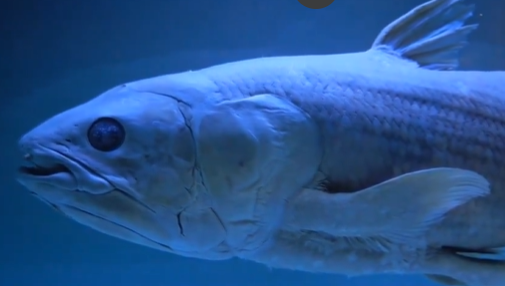Before 1938, zoologists would have confidently listed the coelacanth, a lobe-finned fish, as one of the oldest known species—believed to have vanished millions of years ago. This ancient fish first appeared over 400 million years ago during the Devonian period. Its name itself evokes a distant past, and it was widely assumed that the species had gone extinct during the late Cretaceous period, around 65 to 70 million years ago.
New fossil fish species scales up evidence of Earth’s evolutionary march. Are the world’s oldest ‘living fossil’ coelacanths still evolving? https://t.co/SkdXRrpEWC
— ConservationBytes (@conservbytes) September 12, 2024
However, in a stunning turn of events, the coelacanth was rediscovered in 1938. Marjorie Courtenay-Latimer, a museum worker in the small South African town of East London, was handed a peculiar fish caught by a local fisherman near the Chalumna River. Unable to identify the fish, she had it preserved and sought the expertise of marine biologist Professor James Leonard Brierley Smith. Upon receiving Courtenay-Latimer’s sketch and notes, Smith quickly realized the importance of the find and famously replied via telegram, urging her to preserve the specimen.
When Smith arrived to examine the fish, his hunch was confirmed—it was indeed a coelacanth, a living fossil that had been presumed extinct for millions of years. This discovery rocked the scientific community and propelled both Courtenay-Latimer and Smith into international fame for uncovering a species long thought lost to history.
Fifteen years later, in 1952, another coelacanth was discovered by two fishermen near the Comoro Islands. The scientific world was once again captivated by the continued existence of this ancient species. In the 1990s, a second species of coelacanth was found in Indonesia, further proving the resilience of this ancient fish. Today, there are two known species: the West Indian Ocean coelacanth (Latimeria chalumnae), found near the Comoro Islands, and the Indonesian coelacanth (Latimeria menadoensis).
The coelacanth has managed to survive for millions of years thanks to several unique traits. Its lobed pectoral fins, considered precursors to the limbs of land-dwelling vertebrates, are perfectly suited for navigating the deep underwater environments in which it resides. These deep-sea caves and stable environments have remained largely unchanged for millions of years, offering the coelacanth protection from predators and competition. Additionally, the coelacanth’s low metabolic rate allows it to survive in food-scarce conditions, which has likely contributed to its endurance over time. Finally, the coelacanth’s specialized ecological niche in deep, cold waters has shielded it from many of the evolutionary pressures faced by species in more volatile habitats.
Flinders palaeontology researchers and others abroad have discovered a new #coelacanth fossil, called Ngamugawi wirngarri, discovered in the Gogo Formation in Gooniyandi Country. This has revealed new exciting insights into its evolution 🔗 https://t.co/CZCnuy1ccV @Flinderspalaeo pic.twitter.com/Jle3XFqof6
— Flinders University (@Flinders) September 12, 2024
The story of the coelacanth is one of survival and adaptation. Despite being considered a relic of the past, it has managed to withstand the test of time. Through a combination of evolutionary adaptations and a stable environment, the coelacanth has persisted, virtually unchanged, through some of Earth’s most dramatic periods.
Key Points:
i. The coelacanth, once thought extinct for 65 million years, was rediscovered in 1938 in South Africa.
ii. Marjorie Courtenay-Latimer, a museum employee, identified the unusual fish, which was later confirmed by marine expert J.L.B. Smith.
iii. A second coelacanth was found in 1952 near the Comoro Islands, with another species discovered in Indonesia in the 1990s.
iv. Coelacanths have unique adaptations, live in stable environments, and have low metabolisms, allowing them to survive for millions of years.
v. Today, coelacanths exist as two known species, thriving in deep, cold waters where few changes have occurred over time.
TL Holcomb – Reprinted with permission of Whatfinger News

